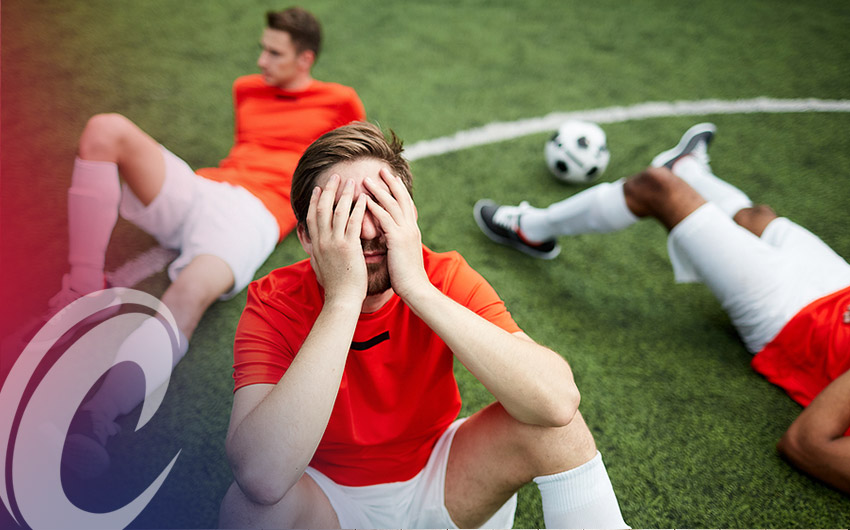The Benefits of a Rest Day
There is no doubt that competitive sports are back. The Covid epidemic may have slowed things down for a bit, but athletes have taken back to their respective playing fields in a big way. Club sports, school sports, private lessons, and skills clinics are all up and running. Now add in going to school and doing homework into the night or having family commitments. Chances are you are exhausted by the end of the day without the chance to get enough rest to do it all over again the next day and so on……
Most athletes know that getting enough rest after exercise is key for high-level performance, but often times feel guilty when they take a day off. From elite athletes to weekend warriors, studies repeatedly show that everyone needs rest. Data shows that athletes exhibit reduced muscular function and cognitive skills when they are not properly rested and allow recovery. Rest is physically necessary for the muscles to repair, rebuild, and strengthen. Building in rest days and engaging in active recovery can help maintain a better balance between home, work, school, and fitness goals.
Benefits of a Rest Day
Rest days are critical for all levels of athletes for a variety of reasons. Some of these reasons are physiological while others are psychological.
Promotes Muscle Recovery
Exercise depletes the body’s energy stores, or muscle glycogen. It also causes muscle tissue to break down. Giving adequate muscle recovery time allows the body to “fix” both of these issues, replenishing the body’s energy stores and repairing damaged tissues.
If sufficient time is not allowed to support these processes, the body breaks down from repeated intensive exercise. This reduces performance and can damage skeletal muscles, which means more soreness and pain.
Prevents Overtraining
Too little rest and too few recovery days can lead to overtraining syndrome. This condition is thought to affect roughly 60% of elite athletes and 30% of non-elite endurance athletes. Once you have this condition, recovery is difficult.
The consequences of overtraining are many. It can:
- Increase body fat
- Raise the risk of dehydration
- Lower libido
- Worsen your mood
Promotes Relaxation
Taking a rest day gives your mind and body a break. Use your rest day to spend more time with family and friends.
What Is Short-Term Recovery?
Short-term recovery occurs in the hours immediately after intense exercise. This includes doing low-intensity exercise during the cool-down phase of your workout. It also involves consuming the right foods and drinks in a post-exercise meal, replenishing your energy stores and fluids while optimizing protein synthesis.
What to Do on a Rest Day
Utilize days off when possible. Use techniques such as soft tissue work, percussion, or simple foam rolling and stretching to relax tight muscles.
There are two types of recovery you can do on a rest day: passive recovery and active recovery. Passive recovery involves taking the day entirely off from exercise. Active recovery is engaging in a low-intensity exercise, placing minimal stress on the body, if any.
During active recovery, the body works to repair soft tissue (muscles, tendons, and ligaments). It also helps with the removal of chemicals that build up as a result of cell activity during exercise. Examples of active recovery exercises include walking, stretching, and yoga.
Sleep is also important, especially when you are training hard. One or two nights of poor sleep usually won’t have much impact on performance, but consistent, inadequate sleep can result in hormone level changes, particularly those related to stress, muscle recovery, and mood.
Research indicates that sleep deprivation leads to increased levels of cortisol (a stress hormone), decreased activity of human growth hormone (which is important for tissue repair), and decreased glycogen synthesis.
When to Take a Rest Day
The number of rest days needed will vary based on the type and intensity of your exercise. The American Council on Exercise (ACE) suggests that, in general, you should schedule a rest day every seven to 10 days if you engage in high-intensity physical activity.
Some workout schedules incorporate rest days more often, such as twice a week. One of these days may be used as a passive recovery day, giving you the day off from exercise completely. The other could focus on active recovery or doing a light-intensity exercise.
Signs You Need a Rest Day
Regardless of your exercise schedule, it’s important to listen to your body. What are some signs to watch for?
In a survey of 605 competitive athletes, the most commonly reported signs of overtraining include:
- General feelings of fatigue
- An unexplained decrease in performance (generally lasting between one week and one month)
- Musculoskeletal aches and pains
ACE adds that if you feel agitated, moody, have a hard time sleeping, lose your appetite, or feel depressed or stressed, this may also be a sign that you are pushing yourself too hard.
What Should I Eat on a Rest Day?
A rest day menu that supports recovery from high-intensity exercise includes both protein (to help the muscles repair and grow) and carbohydrates (to restore the used glycogen). Working with a dietitian or nutritionist can help you determine how much you need of each.
The Bottom Line
So, is exhaustion an injury? Not by itself but it does certainly set you up for one if you choose not to take care of yourself. Listen to your body and rest when it tells you to. Seek the help of sports medicine professionals like Certified Athletic Trainers to treat your nagging little injuries before they take you out of the game.

